Effects of transcutaneous spinal cord stimulation on the brain

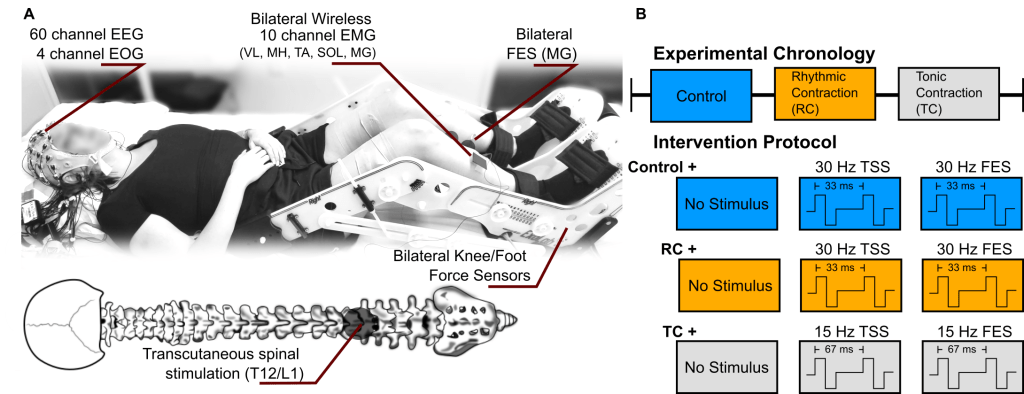
Transcutaneous spinal stimulation (TSS) is a relatively new approach to neuromodulation. We can activate networks in the spinal cord by injecting a small amount of current through the skin, which evokes a response in the muscles (muscle contraction). Depending on the person the electrical stimulus (the zappy time) feels either like a massage or it can be uncomfortable, not exactly painful, just not something you would go out of your way for. But the spinal cord is a two way street, so what does TSS do in the brain?
(more…)Characterization of interlimb interaction via transcutaneous spinal stimulation


I was debating about talking about this because I’m “only” the second author on the paper. Apparently I’ve gotten picky now that I have a handful of first author papers in review/published. I’m joking, but seriously, this paper has a special place in my heart and today I want to talk a bit about the science, but also the story behind the paper, because it is an interesting one!
(more…)Inter-lab rivalry


There’s nothing wrong with a little competition. In the field of research you’re either the first or your a footnote, so we rush to be the first when we know that other labs are on the other labs are not far behind. Our lab knew it was coming, there was already rumblings of something big coming from another lab, but when it finally came, we were both surprised, but not exactly shocked. It’s a pretty impressive paper.
(more…)On the research I do

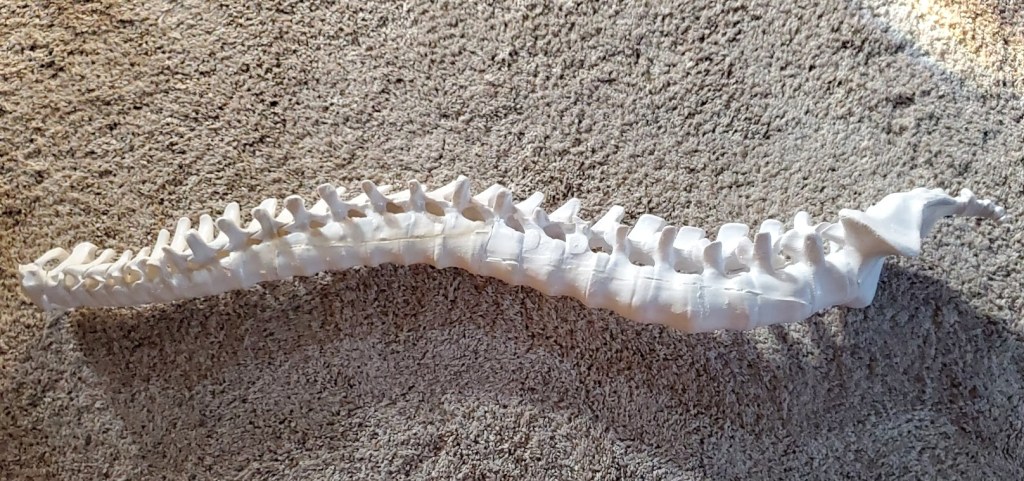
“They are changing the world and I want to help,” one of our regular volunteers told the guy who runs the hospital department. It was a glowing review from someone who had spent the better part of the last decade paralyzed after a high level (cervical) spinal cord injury. We’ve seen him regularly for the better part of a year now and you would’ve thought we coached him if you could hear the review he gave the man who came to see our little lab. I feel stuck a lot, but yesterday I was reminded of why I do what I do.
(more…)Exoskeleton experiments

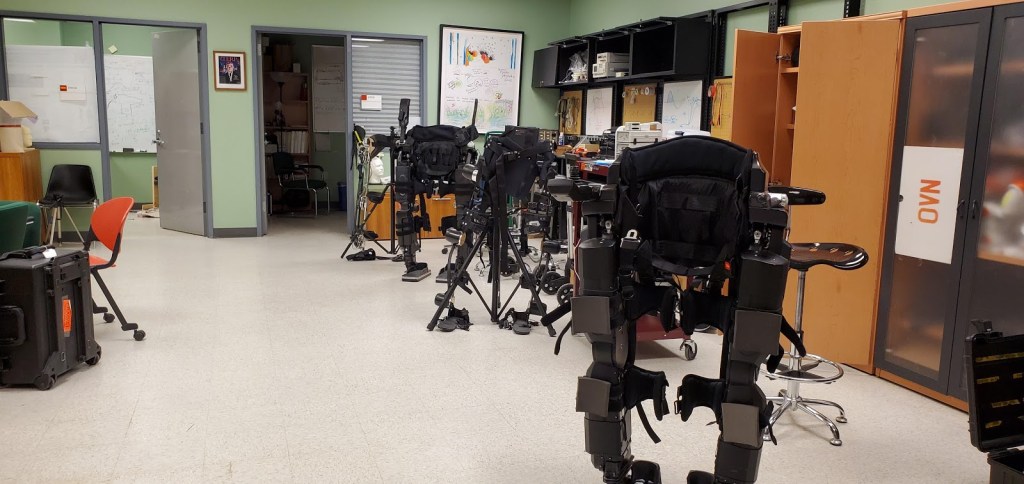
Well let’s toss something else into the pile of “things I’m going to talk about, but can’t share the details because we’re working on a publication.” I’ve got yet another new project I’m working on! This is going to be so freaking cool and I’m super excited to start it. So let’s go over some of the details, at least the bits I can talk about. Eventually when all this stuff gets published, I’m going to have a ton to write about.
(more…)Day 353: Experimental prep

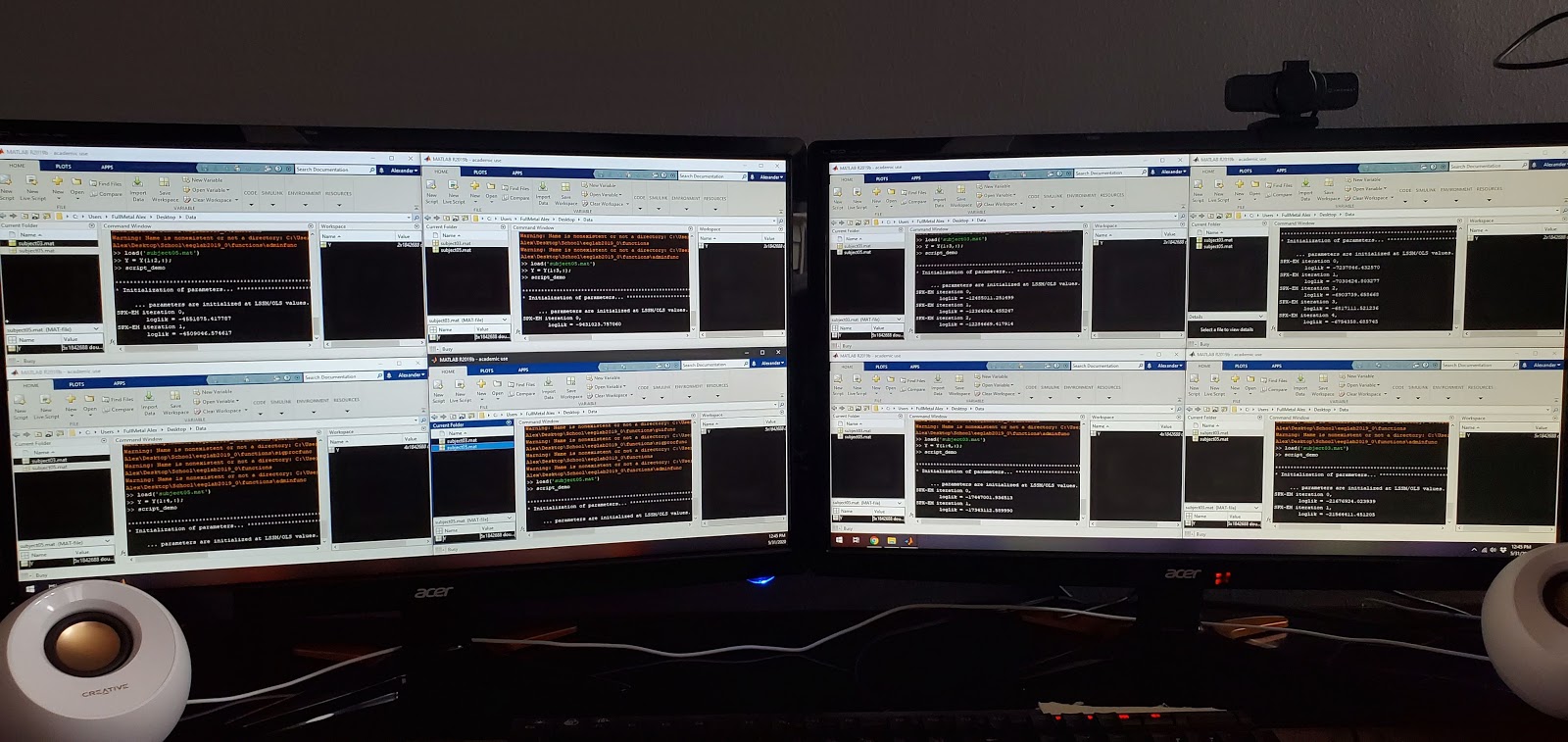
Sometimes a parfor loop in just doesn’t cut it because the things you want to do in that loop aren’t allowed (like save or load data a certain way). In those cases (see above) I can run multiple instances of MATLAB and process my data much more efficiently than if I did it one at a time. In this case I had 8 subjects that needed a rather long mathematical operation performed, so I did it all at the same time. It’s a little silly, but it worked! If you didn’t know you could do that, now you do!
Yesterday I told the story of how we got to this point, a long two year journey and next week I finally get to take the next step. It’s exciting, but it also means because of my flare-up, I’m behind on what I need to do to be ready. Not to worry though, I’m taking it slow so I don’t make whatever I have worse. What goes into an experiment like this? I’m glad you asked!
Day 352: My experiment is coming!!

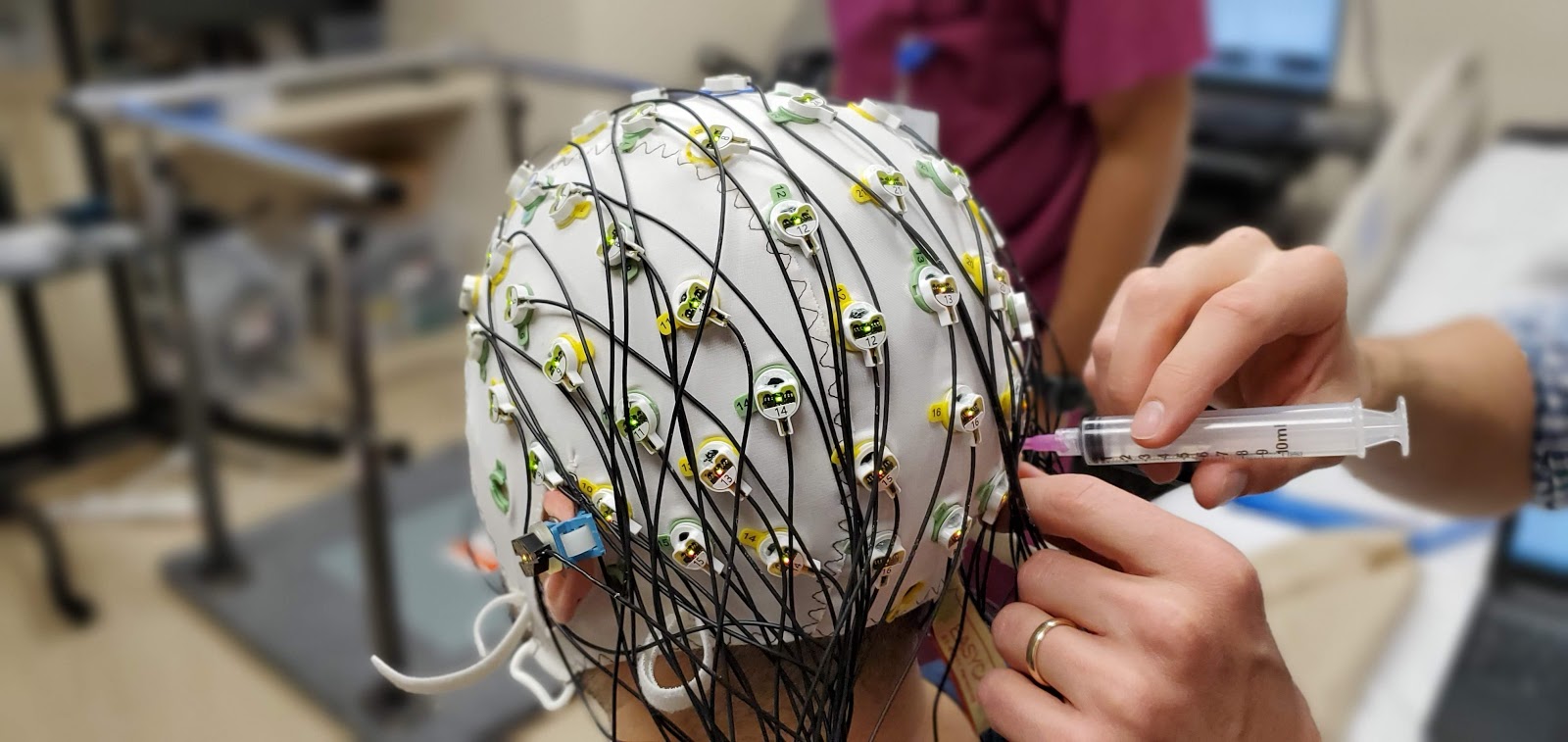
I just really like how this photo came out. Here’s one of my lab mates gelling the electrodes for a pseudo-experiment. The scary looking syringe has a blunt tipped needle, we don’t break the skin in our lab so no pain, just a bit of gel to wash out of the hair once completed.
Okay I’ve got an experiment update today and I’m really excited to share because it feels real finally. I know I already wrote about some of this, but when I reread my previous post, it felt disjointed so let’s go over how we got here and what’s coming. I’m excited, are you excited? I’m excited!
Day 350: In construction…

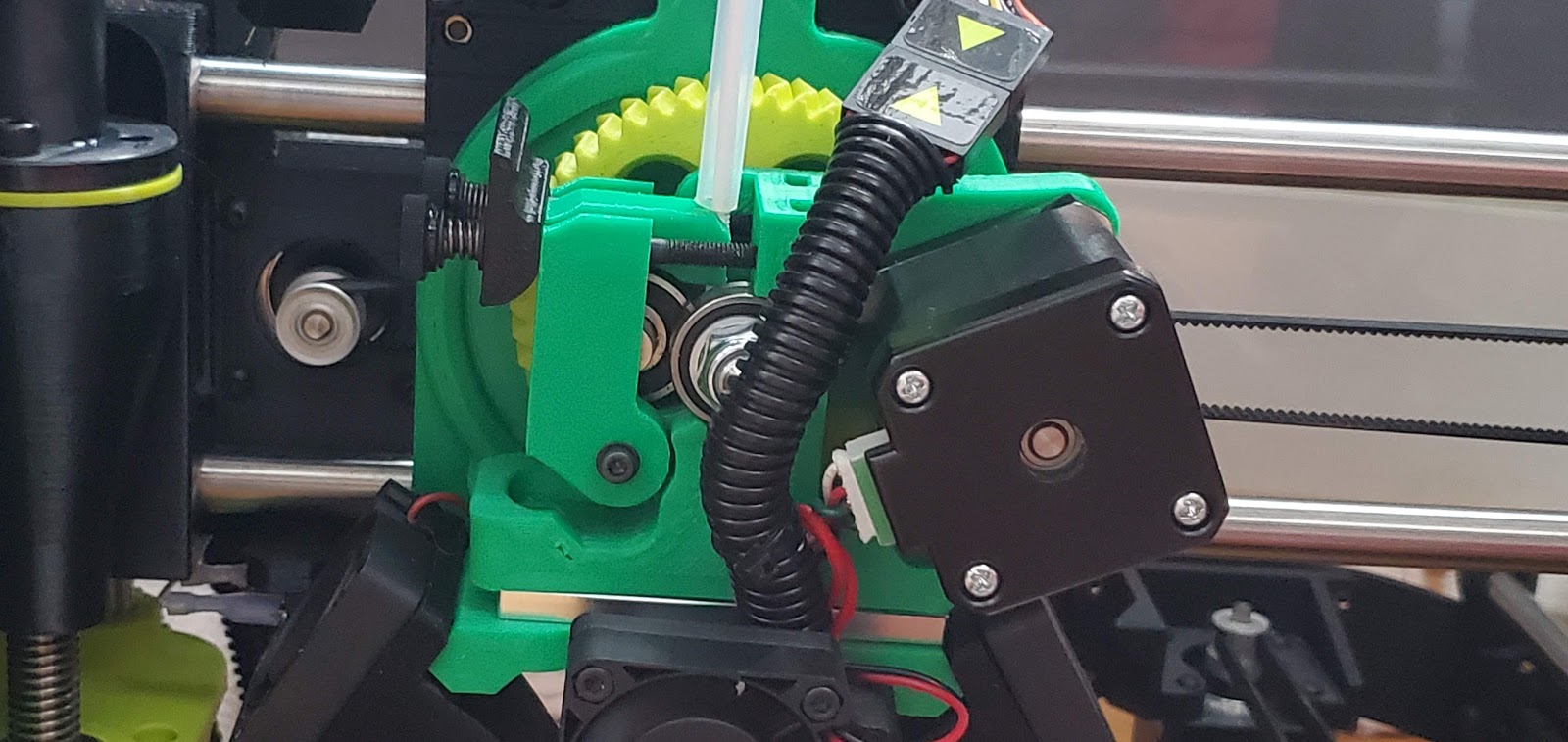
I redesigned my extruder to make it beefier, this has nothing to do with the post, but I’m really proud of it and wanted to share. Haha
Well today despite feeling like refried dog poop I have to go do experiments. It’s part of the job and to be honest I want to do it even though I feel like dried monkey vomit. I could go on, but you get the picture. I do have some more good news not related to yesterday’s news. So that is the conversation for the day.
Day 326: Review: The state of spinal cord research

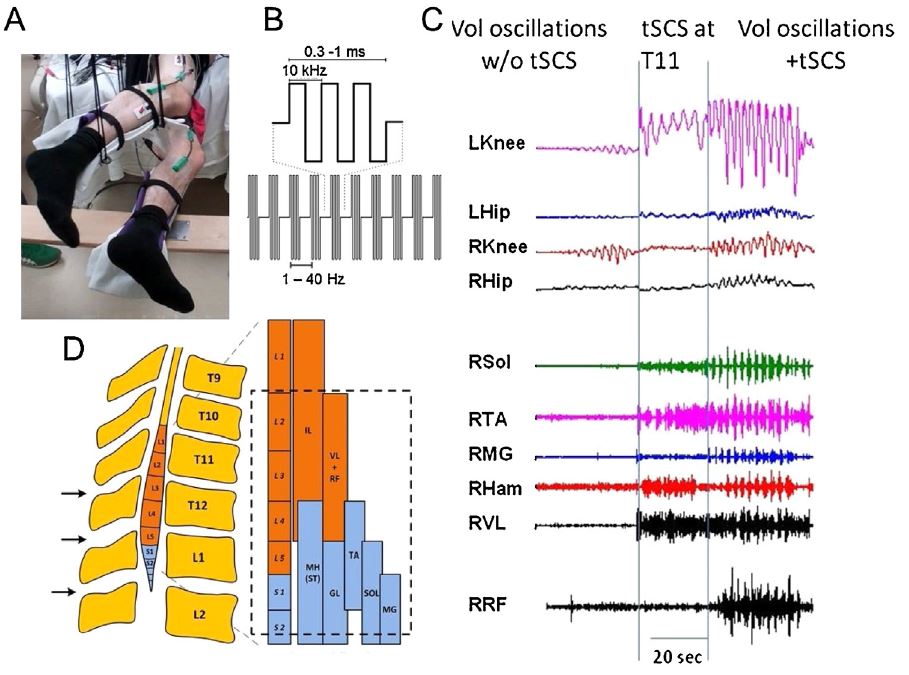
Facilitation of stepping-like volitional oscillations using non-invasive transcutaneous electrical spinal cord stimulation in SCI subject. (A) Position of the participant in the gravity-neutral apparatus. (B) Biphasic electrical stimulation was delivered using unique waveforms consisting of 0.3–1.0 ms bursts filled by 10 kHz frequency that were administered at 5–40 Hz. (C) EMG activity of right soleus (RSol), right tibialis anterior (RTA), right medial gastrocnemius (RMG), right hamstrings (RHam), right vastus lateralis (RVL), right rectus femoris (RRF) and angular displacement in the knee and hip joints of both legs during leg oscillations with a voluntary effort alone (Vol), stimulation at T11 (Stim), and Vol + Stim are shown. (D) Schematics demonstrating the approximate location of transcutaneous electrodes above the lumbosacral enlargement, in relation to the location of the motor pools based on Kendall et al. (1993) and Sharrard (1964).
Well it’s been two weeks (roughly) and my PI asked specifically that this week I do a review on the state of spinal cord research, with emphasis on the spinal cord stimulation work I’m doing. So this review is going to look slightly different, namely it has a rather long references section (15 total). If you find this research fascinating I recommend “And yet it moves” (reference 5). It’s long, but open access and worth the read. I’m a little bias though, my Co-PI is one of the authors. In any case, I had two weeks to write this, so hopefully it is a good dip into what we know about the spinal cord and a lot of what we don’t. Enjoy!
Day 310: Review – Interfacing with alpha motor neurons in spinal cord injury patients

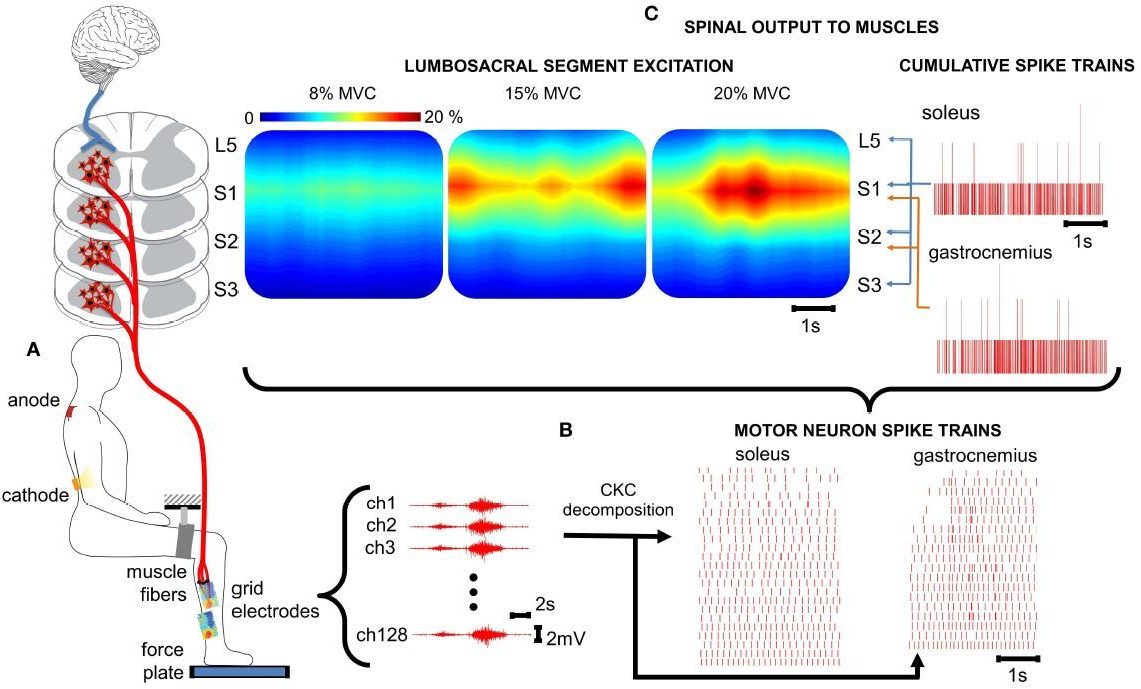
Spatiotemporal spinal maps of ipsilateral a-MNs. (A) Experimental set-up for ankle plantar flexion. (B) HD-EMG is decomposed into a-MN spike trains using a convolutive blind-source separation technique. (C) The spinal output to generate the neural drive to muscles is estimated from the a-MN spike trains.
The world is on fire, we’re protesting for a future, but today I have my review paper due so instead of writing about my frustrations I’m going to share my review. Today we’re looking at the effects of trans-spinal direct current stimulation (tsDCS) on alpha motor neurons and how we can determine that effect using electromyography. It’s actually a very cool paper, the work is well done, and it’s open source so you can read it if you’re interested.


